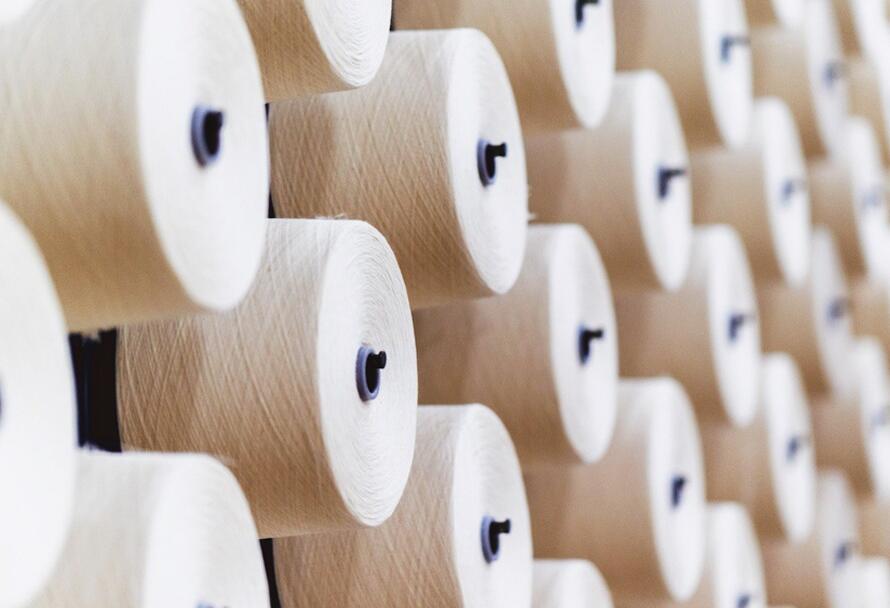The yarn process is a fascinating journey that transforms raw fibers into the versatile and essential material we use in countless applications. Understanding this process provides insight into the meticulous craftsmanship and advanced technology involved in producing high-quality yarns. The journey begins with yarn spinning, a critical stage where raw fibers are spun into yarn, setting the foundation for all subsequent processes. This initial step ensures the fibers are aligned and twisted, giving the yarn its strength and consistency.
Following yarn spinning, the process moves to identifying, where the yarn is carefully inspected and categorized based on its quality and characteristics. This stage ensures that only the best yarns proceed to the next steps, maintaining the high standards of production. After identification, the yarn is prepared for supplying, a logistical phase that ensures the right yarn reaches the right place at the right time, ready for the next stage in its journey.
The next significant phase is weaving or knitting, where the yarn is intricately interlaced or looped to create fabrics. This step highlights the versatility of yarn as it can be transformed into a wide range of textile products. Once the fabric is created, it undergoes fabric finishing, a process that enhances its appearance, texture, and performance characteristics, making it ready for the end consumer.
Finally, the journey concludes with retail and export, where the finished fabric is distributed to markets worldwide, showcasing the global reach and importance of the yarn process. Each of these stages will be detailed further, offering a comprehensive understanding of how raw fibers become the fabrics we use every day.
Yarn Spinning
Yarn spinning is the fundamental process where raw fibers are transformed into continuous strands suitable for weaving or knitting. During spinning, fibers such as cotton, wool, or synthetic materials are drawn out, twisted, and spun together to form yarn. This process not only aligns the fibers but also determines the yarn’s strength, thickness, and texture, crucial factors in the quality of the final textile product.
Fiber Preparation: Raw fibers are cleaned, combed, and aligned to ensure uniformity and strength.
Drafting: Fibers are drawn out and attenuated to the desired thickness and length.
Twisting: Fibers are twisted together to form a cohesive strand of yarn.
Spinning Methods: Various spinning techniques include ring spinning, open-end spinning, and air jet spinning, each offering unique advantages in yarn production.
Quality Control: Yarn is constantly monitored and tested for consistency, strength, and other quality parameters to meet industry standards.
Yarn spinning combines traditional craftsmanship with modern technology, playing a critical role in the textile industry’s supply chain from raw materials to finished fabrics.
Identifying
Identifying in the yarn production process is a critical stage where yarns are meticulously inspected and categorized based on their quality and specific characteristics. This step ensures that only yarns meeting stringent standards proceed further in the manufacturing process. During identification, trained inspectors carefully assess various factors such as fiber composition, yarn thickness (count), twist consistency, and overall uniformity. Visual inspections detect imperfections like knots, slubs, or irregularities that could affect the yarn’s performance in finished fabrics. Additionally, mechanical tests gauge parameters like tensile strength and elasticity, verifying the yarn’s durability and suitability for different applications.
Quality control measures in identifying not only maintain the integrity of the production line but also guarantee that every batch of yarn meets the desired specifications. By adhering to rigorous standards and employing advanced testing methods, manufacturers ensure consistent quality and reliability in their yarn products, ultimately enhancing the overall performance and appearance of the textiles they produce.
Supplying
Supplying in the context of the yarn process refers to the logistical phase where processed yarn is distributed to various destinations according to demand and production schedules. This stage involves coordinating the transportation and delivery of yarn from manufacturing facilities to textile mills or garment factories. Efficient supply chain management ensures that the right quantities of yarn reach the right locations at the right times, optimizing production efficiency and minimizing lead times. Factors such as inventory management, transportation logistics, and communication with stakeholders play crucial roles in ensuring smooth and uninterrupted yarn supply, thereby supporting continuous operations in the textile industry.
Weaving / Knitting
Weaving and knitting are two primary methods of transforming yarn into fabric.
Weaving involves interlacing yarns perpendicular to each other on a loom to create a structured fabric.
Knitting uses loops of yarn to create fabric, with variations like circular knitting for seamless garments.
Both methods offer versatility in fabric textures and patterns.
Weaving produces fabrics like cotton and denim.
Knitting creates fabrics such as sweaters and socks
Fabric Finishing
Fabric finishing is the final stage in textile production, where fabrics undergo treatments to improve their appearance, texture, and performance characteristics. This process includes treatments such as dyeing, printing, and chemical finishes to enhance color vibrancy, add patterns, and impart special properties like water resistance or wrinkle resistance.
Additionally, mechanical processes such as calendering or brushing may be used to give fabrics a smooth or textured finish. Fabric finishing ensures that the textile meets desired aesthetic and functional specifications before it is ready for use in garments, home textiles, or industrial applications.
Retail and Export
Once fabrics are finished, they are distributed through retail channels or exported to global markets. Retail involves selling directly to consumers through stores or online platforms, ensuring products meet consumer demands for style, quality, and price. Exporting expands the market reach, allowing manufacturers to distribute fabrics internationally, catering to diverse preferences and regulatory requirements across different countries. Effective retail and export strategies are essential for maximizing sales and maintaining competitiveness in the global textile industry.
In conclusion,
The yarn process—from spinning raw fibers to finishing and distributing fabrics—encompasses intricate stages that merge craftsmanship with technology. Each step, whether it’s identifying yarn quality, coordinating supply chains, or enhancing fabric properties, contributes to delivering high-quality textiles globally, meeting diverse market demands with efficiency and precision.

